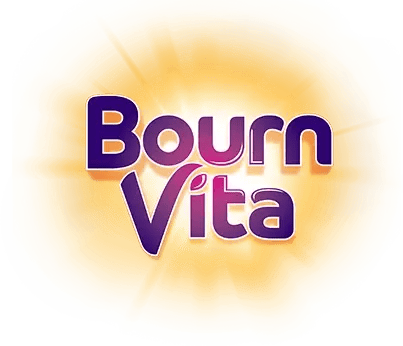- Whole Grains for Energy
- Proteins for Growth and Repair
- Fruits for Natural Vitamins
- Vegetables for Minerals and Fiber
- Dairy and Alternatives for Bone Health
- Healthy Fats for Brain and Heart
- Water and Hydration
Introduction

A balanced diet is the foundation for good health for every family member, no matter what their age. It is about getting the right mix of food on the plate that supports growth, energy, and long-term well-being. Families eat together, and with a few tweaks, the same meals can nourish children, parents, and grandparents.
The key to balance is to include all food groups in the right proportions. Whole grains give steady energy, proteins repair and build tissues, vegetables and fruits give essential vitamins and minerals, and healthy fats keep the brain and heart strong. Even hydration plays a role in ensuring that digestion and nutrient absorption happen smoothly. Each one contributes something unique,and together they make meals that fuel body and mind.
For families, this is especially valuable because it simplifies meal planning. Instead of preparing completely different meals for different age groups, the same wholesome ingredients can be adapted, larger portions for growing children, lighter cooking for elders and balanced servings for adults. This saves time and builds healthier habits across generations.
Balanced eating is about variety, moderation, and nourishment. By focusing on these three families can enjoy food that is delicious, satisfying, and good for them and turn every meal into a step towards better health and shared well-being.
7 Essential Components of a Balanced Diet for Families

Balanced eating is about making sure that every plate carries the right mix of nutrients. Families often have members of different age groups, and while their needs vary, the basics of a balanced diet remain the same. With thoughtful planning, the same meal can be adjusted for children, parents, and grandparents so that everyone enjoys food that is nourishing, satisfying, and tailored to their health.
Whole Grains for Energy
According to FSSAI, wheat, rice, oats, and millets provide carbohydrates that are broken down into glucose, the body’s main source of energy. Whole grains also add fiber, which keeps digestion smooth and helps prevent sudden energy crashes. For children, this means stamina for play and study, while adults benefit from better focus and steady productivity.
Proteins for Growth and Repair
According to the Dietary Guidelines for Indians, dals, beans, eggs, paneer, and nuts supply protein that repairs tissues, builds muscles, and supports overall growth. Kids need them for healthy development, teens for strength, and adults for maintaining muscle mass. Adding a source of protein to every meal keeps the diet balanced and satisfying.
Fruits for Natural Vitamins
According to FSSAI, bananas, papayas, apples, and guavas supply vitamin C, potassium, and fiber that improve immunity and digestion. Fruits also make meals colorful and appealing for children. Seasonal varieties ensure variety and better nutrition throughout the year.
Vegetables for Minerals and Fiber
A study published in, National Institute of Nutrition, shows that leafy greens, carrots, beans, and gourds are rich in iron, calcium, and antioxidants. They strengthen bones, improve blood health, and reduce the risk of deficiencies. Including multiple colors of vegetables daily ensures a wider range of nutrients.
Dairy and Alternatives for Bone Health
A study published in, National Institute of Nutrition, milk, curd, paneer, and cheese, or non-dairy options like ragi, sesame seeds, and enriched plant milk, support bone density and dental strength. Children need them for growth, and seniors for preventing osteoporosis. Simple additions like curd with lunch or paneer in a curry keep meals wholesome.
Healthy Fats for Brain and Heart
As per the research done by FSSAI, sources like nuts, seeds, avocados, and oils such as mustard or groundnut oil provide omega-3 and omega-6 fatty acids. These fats improve brain function, hormone balance, and heart health. Even kids benefit from small portions of nuts or ghee in their meals.
Water and Hydration
According to a study published in, Adv Nutr. 2021, water supports digestion, nutrient absorption, and temperature regulation. Alongside plain water, coconut water, buttermilk, and lemon water add electrolytes and refreshment. Encouraging children and elders to drink enough fluids ensures steady energy and prevents fatigue.
Conclusion

A balanced diet is not about perfection in every meal but about consistency across the day. By including whole grains, proteins, vegetables, fruits, dairy or alternatives, healthy fats, and enough water, families can create meals that meet everyone’s needs. These simple components bring harmony to the table, supporting growth in children, stamina in adults, and vitality in seniors. With small, thoughtful choices, family meals can be both enjoyable and nourishing, turning food into a source of strength for every generation.
Her love for storytelling began with reading her grandfather’s speeches, where Tarishi saw the power of words in creating lasting memories. Combining her passions for food and writing, she has turned her life into a fulfilling path of sharing stories that celebrate flavours and how food brings communities together.
The views expressed are that of the expert alone.
The information provided in this content is for informational purposes only and should not be considered a substitute for professional medical advice, diagnosis, or treatment. Always seek the advice of your physician or another qualified healthcare provider before making any significant changes to your diet, exercise, or medication routines.
References
https://pmc.ncbi.nlm.nih.gov/articles/PMC8634318/
https://nin.res.in/dietaryguidelines/pdfjs/locale/DGI_2024.pdf
https://www.nin.res.in/ebooks/The_goodness_of_greens.pdf
https://fssai.gov.in/upload/media/FSSAI_News_Vitamin_GPlus_27_07_2020.pdf
https://www.nin.res.in/dietaryguidelines/pdfjs/locale/DGI24thJune2024fin.pdf
















